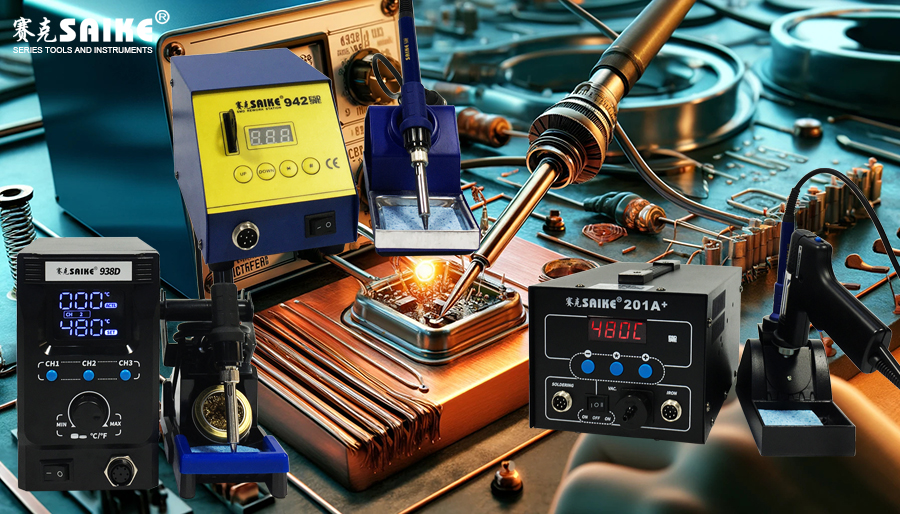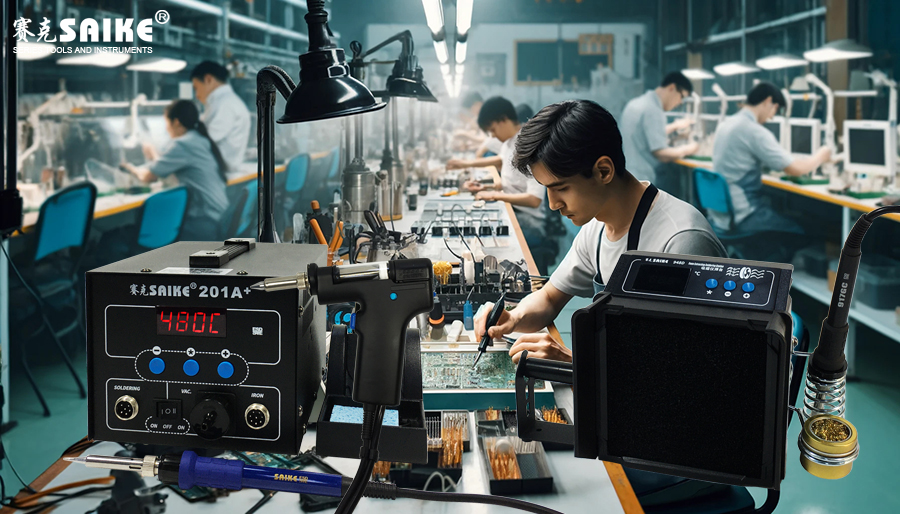
SK-YJ000HT-KP 100004
The soldering station, as a key equipment in the soldering process, involves multiple fields such as electrothermal effects, materials science, and soldering technology. The following will elaborate on the working principle of the soldering station.
I. Electrothermal Effect
The basic working principle of the soldering station is to connect two or more metal materials together through the electrothermal effect. Specifically, the soldering station is equipped with a heating element, usually a resistance wire. When current passes through this resistance wire, due to the existence of resistance, electrical energy is converted into heat energy, making the resistance wire heat up. This electrothermal conversion is the basis of the soldering station’s work.
II. Heat Conduction
1.The heat generated by the heating element is conducted to the metal surface of the soldering station. The surface is usually made of materials with good thermal conductivity, such as copper or iron, to ensure that heat can be quickly and evenly conducted to the entire surface.
2.When the workpiece is placed on the soldering station for soldering, the surface will transfer heat to the workpiece, heating it to a sufficient temperature. In this process, the atomic activity of the metal material intensifies, which helps to achieve the melting and connection of the material.
III. Soldering Process
1.During the soldering process, the welder needs to fix the workpiece to be soldered on the soldering station to ensure its stability and positional accuracy.
2.As the temperature rises, the metal material at the contact point of the workpiece begins to melt, forming a liquid metal pool.
3.After the formation of the metal pool, the welder can add solder (such as tin wire), which will also quickly melt after being heated and mix with the melted part of the workpiece.
4.As the solder cools and solidifies, the two workpieces are firmly connected together.
IV. Temperature Control and Regulation
Modern soldering stations are usually equipped with a precise temperature control system. The welder can set an appropriate soldering temperature according to different soldering requirements and material characteristics. The introduction of the temperature control system has greatly improved the accuracy and quality of soldering.
V. Summary
In summary, the working principle of the soldering station is mainly to generate heat energy through the electrothermal effect, and use heat conduction and soldering technology to achieve the connection of metal materials. Throughout the process, temperature control and the stability of soldering operations have a crucial impact on soldering quality. With the advancement of technology, the design and function of soldering stations are constantly innovating and improving to meet more complex and sophisticated soldering needs.


